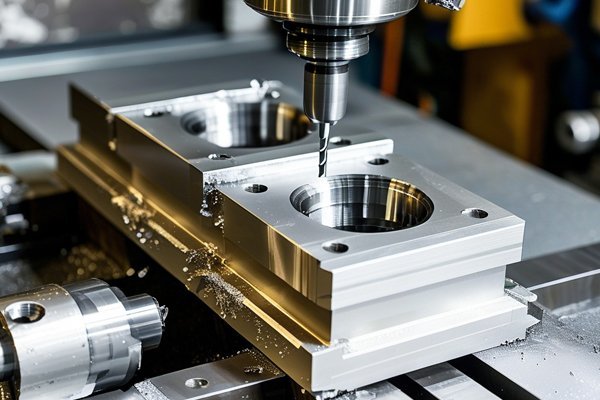Did you know that cutting tool wear accounts for nearly 30% of machining costs in production environments? This staggering statistic is especially pertinent in CNC machining, where the precision and efficiency of each process can make or break the bottom line of manufacturing operations. Among various materials processed, 304 stainless steel presents unique challenges due to its toughness and work-hardening properties. In this blog, we will explore how CNC machining can enhance the service life of cutting tools during the processing of 304 stainless steel, ensuring cost-effectiveness without compromising quality.
Understanding the Basics
Before diving into solutions, it’s important to understand why 304 stainless steel is such a challenge for cutting tools. 304 stainless steel is a type of austenitic steel that contains high levels of chromium and nickel, providing excellent corrosion resistance. However, its properties also result in pricy tool wear due to work hardening and the need for greater cutting forces. As operators grapple with these challenges, the quest for improved tool life becomes increasingly critical.
The Significance of Tool Life in CNC Machining
Tool life is a key performance indicator in CNC machining. An extended tool life leads to:
Key Techniques to Improve Cutting Tool Life
In the pursuit of enhancing the service life of cutting tools, CNC operators can leverage multiple strategies:
The right cutting parameters—such as speed, feed rate, and depth of cut—are paramount for tool longevity.
Cutting Speed: A higher cutting speed can generate more heat, leading to premature tool wear. Conversely, cutting too slowly may lead to work hardening. A balanced approach, paired with material specifications, is essential.
Feed Rate: Adjusting the feed rate can minimize cutting forces. A slower feed rate can improve surface finish, while a faster rate can expedite the machining process—finding the sweet spot is key.
Depth of Cut: A shallower cut may prolong tool life but will necessitate longer machining times. A balance between efficiency and longevity must be considered based on the specific setup.
Modern cutting tools can be constructed from various advanced materials designed for enhanced performance with challenging materials like 304 stainless steel.
High-Speed Steel (HSS): While traditional, HSS can be effective if used within its limits.
Carbide Tools: These tools are notably more durable than HSS and can withstand high cutting speeds. However, they come with a higher upfront cost.
Coatings: Applying coatings, such as titanium nitride (TiN) or aluminum oxide (Al2O3), can significantly reduce friction and protect the tool from wear. Coatings are especially useful when machining tough materials.
Heat management is crucial when machining 304 stainless steel. Excess heat can degrade cutting tool materials and lead to premature failure.

Coolant Use: Implementing a proper coolant, whether liquid or gas-based, can remove heat dissipated in the cutting zone, significantly extending tool life.
Minimum Quantity Lubrication (MQL): This sophisticated technique applies a minimal amount of coolant directly at the cutting interface, effectively reducing temperature and friction while maintaining visibility on the work surface.
The design of cutting tools—especially their geometry—can dramatically influence performance in CNC machining.
Flute Design: Tools with optimized flute geometry can enhance chip removal and reduce friction.
Cutting Edge Configuration: Well-designed cutting edges can reduce cutting forces, minimizing wear. Tools designed with an acute positive rake angle may also reduce cutting forces.
Regular inspection and maintenance of CNC tools are critical for sustaining performance. Basic practices include:
Sharpening and Reconditioning: Regular sharpening ensures that tools maintain their effectiveness, especially for tools that can be reconditioned.
Proper Storage: Tools should be stored in a manner that prevents damage or wear when not in use. A climate-controlled environment can also preserve tool integrity.
Using monitoring systems for performance metrics can provide insights into tool wear and effectiveness. Many CNC machines come equipped with tool management software that tracks usage.
Tool Life Tracking: Keeping a log of tool usage times can help operators know when it’s time for a replacement.
Vibration Analysis: Excessive vibration during operation can indicate tool wear, leading to premature failure. Vibration monitoring systems can provide alerts to operators for timely interventions.
Dealing with Work Hardening
One of the primary obstacles in machining 304 stainless steel is its tendency to work-harden during machining. When the material undergoes deformation, it becomes harder and more difficult to cut.
Strategies to Combat Work Hardening
As the industry continues to evolve, the need for improving the service life of cutting tools during the CNC machining of 304 stainless steel has never been more crucial. By optimizing cutting parameters, utilizing advanced materials and coatings, enhancing cooling, employing efficient tool geometry, and ensuring regular maintenance, CNC operators can significantly extend tool life while minimizing costs.
The importance of this topic cannot be overstated. As competition in manufacturing intensifies, every minute of machine uptime counts. The insights provided here not only promote a deeper understanding of the challenges associated with 304 stainless steel machining but also encourage best practices that can lead to improved efficiency and productivity. Every CNC professional should consider these practices, ensuring they remain at the forefront of competitive manufacturing. By recognizing and implementing these strategies, manufacturers can achieve a balance between performance and cost efficiency that is vital for long-term success in any CNC operation.






